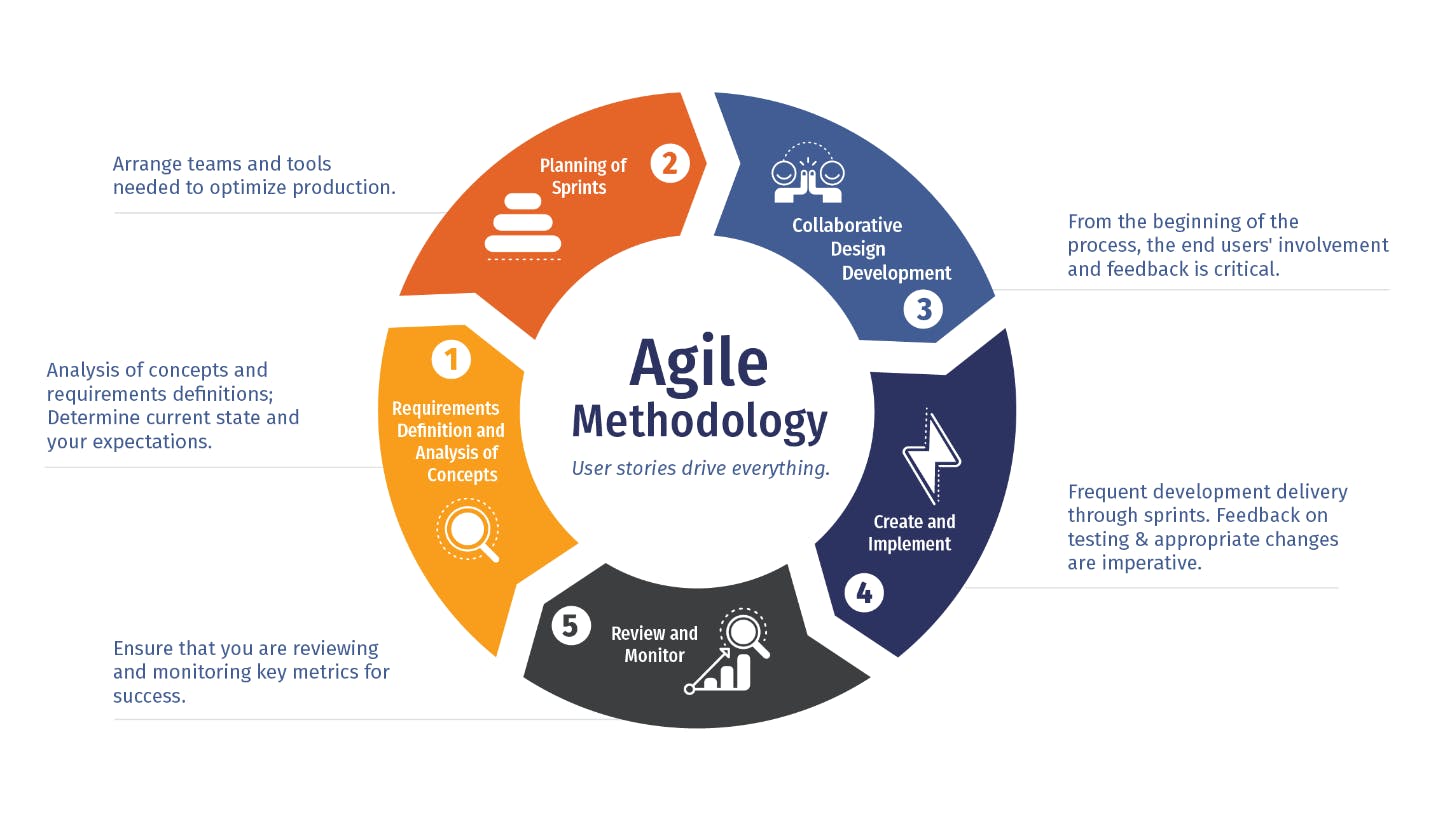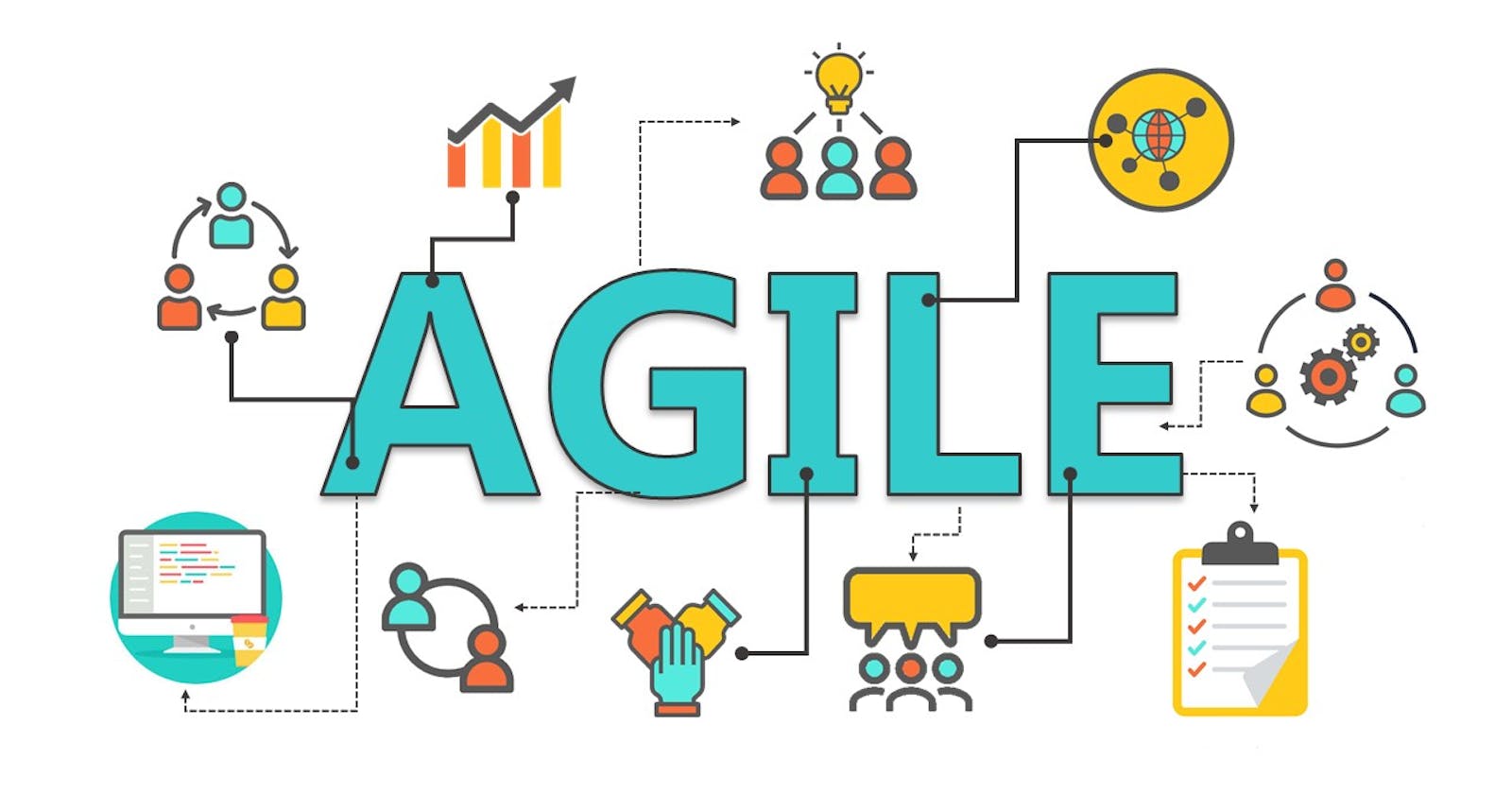In today's fast-paced and rapidly evolving software development industry, agility is crucial for success. The traditional models of software development were slow and rigid, leading to delays, cost overruns, and unhappy customers. Agile methodology, with its emphasis on collaboration, flexibility, and continuous improvement, has revolutionized the industry. The benefits of agile methodology are numerous, including faster delivery, continual development, flexibility, cross-functional teams, continuous feedback, and added business value. It is no wonder that 97% of organizations are now practicing agile development methodologies.
Let's take a deeper dive into understanding the basic concepts of agile methodology. In this comprehensive guide, we will explore the key principles, terminologies, and frameworks of agile methodology.
The Agile Manifesto
The Agile Manifesto is the guiding principle for Agile software development. It simply values
Individuals and interactions over processes and tools
Working software over comprehensive documentation
Customer collaboration over contract negotiation
Responding to change over following a plan.
In essence, agile methodology values change and collaboration as compared to pre-planned, documented traditional models.
The 12 Principles of Agile Methodology
The following are the 12 principles of Agile methodology:
Customer satisfaction: This principle emphasizes the importance of delivering useful software to customers as early as possible and ensuring their satisfaction through the constant delivery of valuable features.
Welcome change: Embracing change as a natural part of software development, and being flexible and adaptable to changing customer needs, even during the later stages of development.
Frequently delivered software: Delivering software in small, incremental releases, typically every few weeks, rather than waiting for long periods before releasing large chunks of software.
Work together: Teamwork, collaboration, and communication among team members, stakeholders, and customers.
Trust and support: Trust and support among team members, with a focus on encouraging creativity, innovation, and problem-solving.
Face-to-face conversation: Face-to-face communication and collaboration, whether it be in person or through video conferencing, build stronger relationships and ensure shared understanding among team members and stakeholders.
Working software: Delivering working software at every stage of development, rather than focusing solely on documentation or other deliverables.
Sustainable development: Sustainable development practices, such as ensuring a manageable pace, maintaining a healthy work-life balance, and focusing on long-term productivity and quality over short-term gains.
Continuous attention: This principle emphasizes the importance of continual attention to quality, technical excellence, and good design practices throughout the software development lifecycle.
Simplicity: Simplicity in software design and development, encourages teams to focus on the essential features and avoid unnecessary complexity.
Self-organizing teams: Teams should be self-organizing and take ownership of their work, with minimal direction or micromanagement from management.
Reflect and adjust: Reflection and continual improvement, through regular retrospectives and the ability to adapt to changing circumstances and feedback from customers and stakeholders.
Agile Terminologies
The following are some of the commonly used terminologies in agile methodology:
Product backlog: A product backlog is a list of all the requirements that the customer wants in the software product. These requirements are organized based on their priority and value to the customer. The product backlog is dynamic and evolves as product development progresses. It includes all the features, functionalities, improvements, and bug fixes that the customer wants in the software.
Epic: An epic is a large-level requirement that cannot be completed in a single sprint or iteration. Epics are broken down into smaller features or user stories that can be completed in a single sprint. Epics provide a high-level view of the customer's requirements and help in identifying the scope of the project.
Feature: A feature is a division of an epic that defines a specific functionality or capability of the software. Features are more specific than epics and provide a clear understanding of what the customer wants. Features are usually small enough to be completed within a single sprint.
Story: A user story is a detailed definition of each feature that describes what the user wants to achieve with that particular feature. User stories are written from the perspective of the end-user and describe the functionality that the user wants to see in the software. User stories are used to prioritize and plan work for each sprint.
Task: A task is a solution to a user story that describes how the feature will be implemented. Tasks are usually smaller than user stories and can be completed in a few hours or a day. Tasks are created during sprint planning and are used to break down user stories into smaller, actionable items.
Agile Frameworks
Agile provides us with a framework where continuous improvements happen in the software development life cycle (SDLC) stages. The commonly used frameworks are:
Scrum
Lean
Kanban Software Development
Extreme Programming (XP)
Dynamic Systems Development Method (DSDM)
Feature Driven Development (FDD)
Crystal
The Agile Process
The agile process follows a Plan-Design-Build-Test-Review approach, as follows:
Plan: During the planning stage, the customer's requirements are identified and prioritized. The customer's requirements are captured in a product backlog which is a living document that contains a list of features, functionalities, and ideas that may or may not make it to the final product. The team then selects the most important items from the backlog and prioritizes them for development in the upcoming sprint.
Design: The design stage is where the team takes the items from the product backlog and breaks them down into small, manageable chunks called Epics, Features, and Stories. Epics are high-level requirements that can take several months to complete, Features are the divisions of an Epic that precisely define the needs of the customer and can take weeks to complete, and Stories are a detailed definition of each Feature that can take days to complete. This process helps the team to fully understand the requirements and scope of work for the upcoming sprint.
Build: During the build stage, the team develops the software in sprints or iterations. Each sprint typically lasts from one to four weeks, and the team works on delivering a working software increment at the end of each sprint. The goal is to deliver the most valuable functionality to the customer first, and then iterate on it in subsequent sprints.
Test: After the software has been developed, it is tested thoroughly to ensure that it meets the customer's requirements. Testing is done after each sprint, and any issues found are addressed in the next sprint. This process ensures that the software is delivered with the highest quality.
Review: After each sprint, the team conducts a review to identify areas for improvement. This review includes feedback from the customer, stakeholders, and team members. The team uses this feedback to improve the product and the development process in the next sprint. This continuous feedback loop ensures that the software is always improving and meeting the customer's needs.

Benefits of Agile Methodology
The following are the benefits of agile methodology:
Early delivery: Agile methodology enables early delivery of software increments, providing customers with faster access to the product.
Continual development: Agile methodology enables continual development and improvement of the software throughout the SDLC.
Flexibility: Agile methodology allows for flexibility in response to changes in customer requirements or the market.
Cross-functional teams: Agile methodology enables cross-functional teams to develop and iterate, producing minimum viable products (MVPs) easier.
Continuous feedback: Agile methodology encourages continuous feedback from the customer and other stakeholders, helping to improve the product.
Added business value: Agile methodology delivers software increments that provide business value, improving customer satisfaction and loyalty.
Conclusion
In conclusion, adopting agile methodology is essential for any organization that wants to thrive in today's competitive software development landscape and deliver value to its customers.
